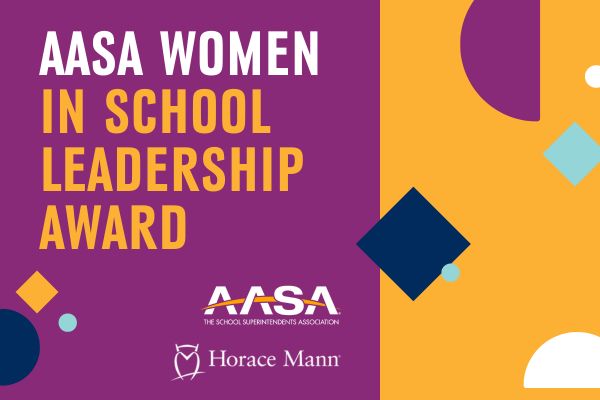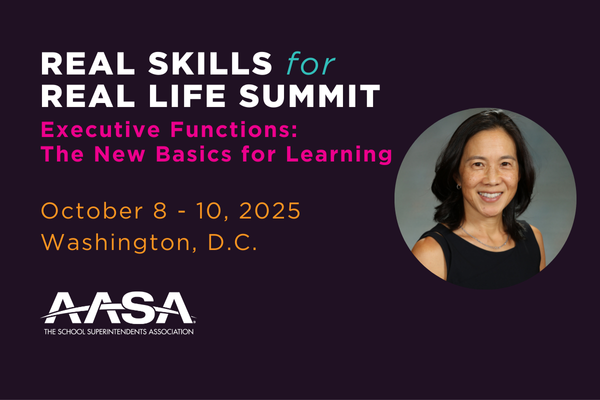Baldwin Summit: A Powerhouse of Thinkers and Doers on Behalf of Kids
March 20, 2023
New York school district hosts first-ever Future of Learning Summit
The Baldwin Union Free School District (UFSD), an award-winning, K-12 district located on the south shore of Long Island in Baldwin, N.Y., recently teamed up with AASA, The School Superintendents Association, to assemble more than 70 education thought leaders from across the country to participate in the first-ever Future of Learning Summit.
Home to approximately 4,500 students, Baldwin UFSD has received recognition for its innovative and rigorous academic programs, numerous partnerships and redesigned classrooms, and prides itself on planning for the future by ensuring students become college-, career- and civic-ready.
The March 1-3, 2023, gathering brought together leaders representing the PreK-16 education, industry, policy and philanthropic communities to help map out strategies that ensure youth are prepared for life after high school.
“This is the first convening that I know of to get all of us in a room together for this very important conversation to have the opportunity to move the needle forward,” said Shari L. Camhi, who has served as Baldwin’s superintendent for the past nine years and currently serves as the 2022-23 president of AASA. “It is vital to hear the voices from all fields to be part a collaborative effort when we talk about learning five, 10 and 15 years from now. We need to modernize. What we do is completely dependent on the future of work and the needs of industry.”
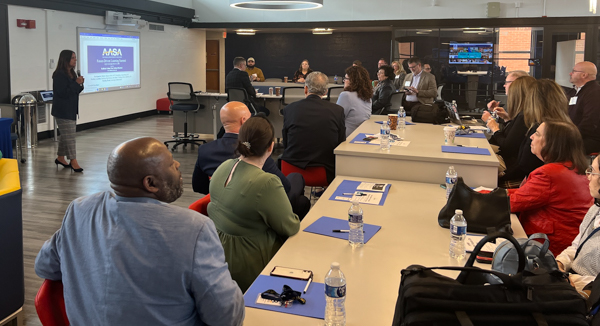
Shari Camhi: "This is the first convening that I know of to get all of us in a room together for this very important conversation."
“We must plant new dreams in the minds of our students as we prepare them for a world of work that has not yet been realized,” said David R. Schuler, who attended the summit during his first official week as executive director of AASA. “This
gathering served as a call to action for school districts to forge new steps to provide cutting-edge systems of best practices for our students so they can imagine the myriad of possibilities beyond high school graduation.”
It is vital to hear the voices from all fields to be part a collaborative effort when we talk about learning five, 10 and 15 years from now.
Under Camhi's leadership, the graduation rate at Baldwin Schools has climbed to 98%, ranking the high school among U.S. News & World Report's annual Best High Schools for the last two years. In
addition, her district has achieved the “New York State Recognition School” distinction by the New York State Education Department.
Additionally, Baldwin UFSD was recognized by AASA last year as a Learning 2025 Lighthouse Demonstration System in the area of future ready, and is serving as a model of positive forward motion in public education in a bold movement toward creating a meaningful and relevant experience for the students of our nation’s schools.
Representing public policy, James Lane, a senior advisor at the U.S. Department of Education, who most recently served as Virginia’s 25th superintendent of public instruction, served as a noted speaker.
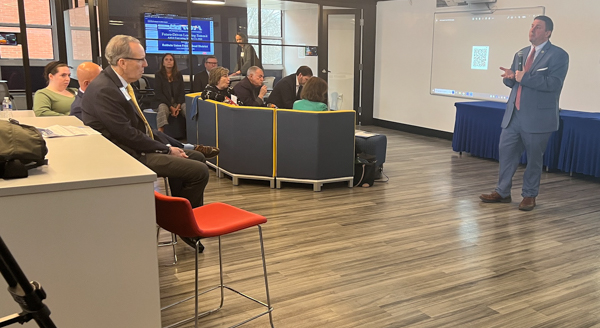 James Lane, senior advisor at the U.S. Dept. of Education, participated in the Future of Learning Summit at Baldwin Schools in Baldwin, N.Y.
James Lane, senior advisor at the U.S. Dept. of Education, participated in the Future of Learning Summit at Baldwin Schools in Baldwin, N.Y.
“Looking at what AASA is driving in terms of their Learning 2025 initiative, and how we have this amazing opportunity to innovate — the resources that we brought to bear during this administration can be the jet pack to spur a lot of that
innovation,” said Lane. “Being in charge of the American Rescue Plan, this is a once-in-a-generation opportunity for us to transform learning. [U.S. Department of Education Secretary Miguel Cardona] talks about reimagining our classrooms
in the context of, ‘let’s not go back to where we were in 2019,’ but ‘let’s use this huge moment in time to build our classrooms to a place that we couldn’t have imagined had it (the pandemic) not happened.’”
“It was a professional honor to be invited to the Baldwin summit and sit in a room with a group that is ready to take action,” said Andi Fourlis, superintendent of Mesa Public Schools in Mesa, Ariz. “This proved that superintendents, policymakers, and industry and higher education leaders have a common goal to redesign the future of learning. We must work together and cannot wait. The future is here. We must move to action.”
“Having the opportunity to work with other people who are making a difference in education was very impactful,” said Carmella Seely, business development officer at Apptegy, an Arkansas-based firm whose services support district marketing teams. “Being in a room with like-minded people who are trying to envision what the future of education is going to look like and create
an action plan around it exceeded my expectations.”
Through an illustration of youth leadership in the field of journalism, Seely participated in a mock interview during a workshop by 8th-grade students. “Being asked about leadership by students who recognize the importance of industry partners
was amazing,” Seely said.
Other summit highlights included:
- The Baldwin Educator Residency Program: The program allows teachers to leave the classroom for a year and provides them with opportunities to gain informative experiences in the industry. They are also able to take courses through Harvard’s Project Zero on effective strategies to engage students, shadow students during their normal school day, visit innovative schools across the country, redesign curriculum and work with fellow teachers on implementing these strategies and a new way of thinking about learning. Year 2 of the ERP program has allowed these resident teachers to work collaboratively as thought partners with colleagues to continue this work and begin development on performance-based assessment models of academic measurement.
- Student Panel through Baldwin’s Academic Academies: Baldwin UFSD created seven academic academies on behalf of high school students: education; fine and performing arts; global business and entrepreneurship; government and law; medical and health sciences; new media; and STEM. Students representing these academies participated in a panel discussion with summit attendees and shared the tremendous impact the program is having on them and how it’s preparing them for the real world and their future in work.
- Classroom Tours: Attendees toured two elementary schools, one middle school and one high school, and were able to see firsthand the high level of engagement students had with each other and their instructors, and, most importantly,
how students were committed to their learning.
Baldwin UFSD: A ‘Blueprint of Lifelong Learning’
Ken Wallace, superintendent of Maine Township High School District 207 in Park Ridge, Ill., and a lead superintendent of AASA’s IDEAL Cohort, was impressed with the district’s curriculum construction, calling it a “blueprint of lifelong learning.
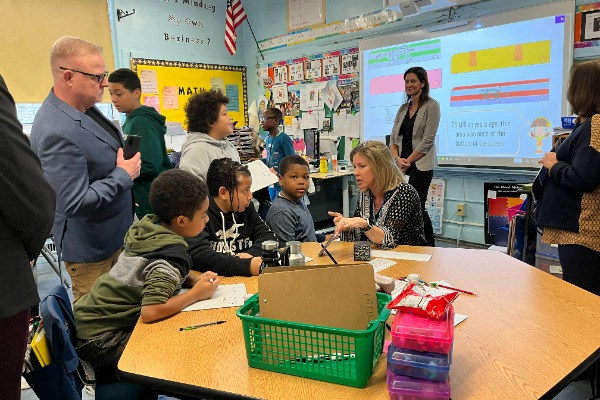 Ken Wallace: "The Baldwin model is very much like a framework for mastering learning."
Ken Wallace: "The Baldwin model is very much like a framework for mastering learning." “There is a really cool ethos in the school district that explores the wonder and mystery of learning that taps into human curiosity,” said Wallace. “Students are allowed to gain a deeper understanding of a complex subject. There
is no rush to move on. In science, for example, students are actively engaged and involved in experiencing the world around them, which helps them retain more knowledge. The Baldwin model is very much like a framework for mastering learning.”
Attendees were urged by their host to not let this summit become an endpoint, but rather a platform to keep the movement going. “We need to bring the conversation to the next level, so change really does happen,” said Camhi.
“This summit was a win-win because we got to see, at a system’s level, a great school district with great leadership, great board involvement and a great example of a model of what great public education looks like,” said Wallace.
“If we’re going to scale this work at a higher trajectory, we have to have models just like Baldwin.”
“I applaud Superintendent Shari Camhi and her team for their gracious hospitality to serve as our hosts for this important meeting, which will become a catalyst for many more meetings of this nature to follow,” said Schuler.
“Designing a culture and learning system to prepare students for the future is possible. Baldwin is a model for what is needed to create the change we need,” said Fourlis.
Here’s what was said about the Future-Driven Learning Summit at Baldwin UFSD
“The summit served as a call to action for K-12 education, higher education, industry leaders and policymakers to collaborate in meaningful and intentional ways to guide the next generation of learning. I left the summit inspired by where the
future of learning is headed and committed to being a part of supporting collaboration among education, policy and industry leaders seeking to provide authentic and meaningful ways to prepare our students for their futures.”
– Dan
Bridges, Naperville Community Unit School District 203, Naperville, Ill.
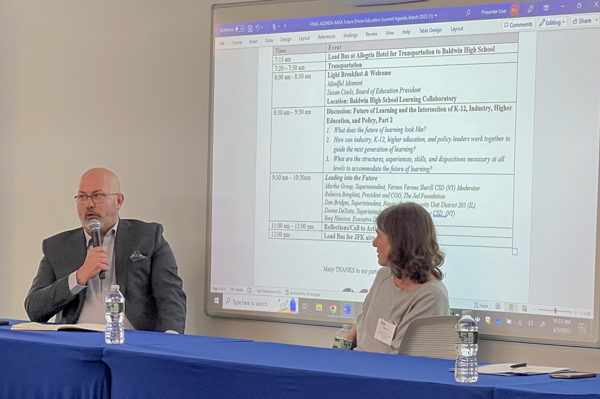 Dan Bridges: "The Summit served as a call to action for K-12 education.
Dan Bridges: "The Summit served as a call to action for K-12 education.
“A powerful experience was going into kindergarten and first-grade classrooms where we had middle-school students who were in the pre-academic academy teaching lessons. Their execution of the different lessons collaboratively was very inspiring
to watch. The engagement was incredibly high across the board.”
– Bryan Luizzi, superintendent, New Canaan Public Schools, New Canaan, Conn.
“After spending time in the high school, we were able to see a lot of students taking ownership for their learning. Given that we saw elective courses, we were able to see students across grade levels who were working collaboratively in those
environments.”
– Martha Group, superintendent, Vernon Verona Sherrill Central Schools, Verona, N.Y.
“If you ever want to see a demonstration of the six Cs (creativity, collaboration, communication, critical thinking, character and citizenship), go to the middle school. It didn’t matter what subject we were seeing, whether it was a pre-academic
academy or a regular class. There was purposeful and intentional integration of the six Cs. It wasn’t just ‘we were teaching critical thinking on the third Thursday of the month,’ but rather ‘we were doing it every single
day with full intentionality.’ Wow! How well did those teachers really execute and live that belief? They didn’t see themselves in the work. They saw that as their work. I thought that was really powerful.”
– Todd
Hellman, vice president, chief finance officer, Battelle for Kids
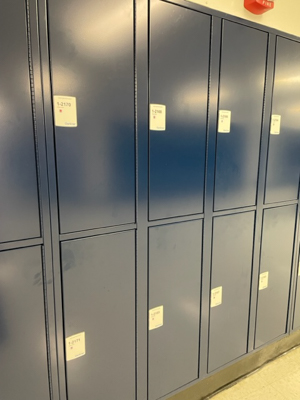 High school students at Baldwin Schools can open their lockers electronically without using combinations.
High school students at Baldwin Schools can open their lockers electronically without using combinations. Baldwin Smart Lockers
Smart lockers are making their debut at Baldwin’s high school. The lockers are linked to students’ ID badges so that students can swipe to open their lockers versus using a combination. This was invented for a few reasons, but mainly for security purposes and to encourage students to always wear their ID badges.
This cuts down considerable maintenance time, since the district no longer needs to maintain thousands of locks and locker combinations. Baldwin UFSD is the first high school in the country to have implemented the smart locker.
The AASA Learning 2025 National Summit
The Learning 2025 National Summit, co-hosted by AASA and the Successful Practices Network, June 26-28 in Washington, D.C., will bring together leadership, faculty, boards and staff from across the country to highlight the work of building future-focused capacity by exemplar districts in alignment with the commission, like Baldwin UFSD.
Over the course of the summit, participants will learn from each other, as well as thought leaders and national experts, through keynote presentations, how-to sessions and networking sessions focused on strengthening culture, focusing instruction and maximizing the use of resources. Click here to learn more.
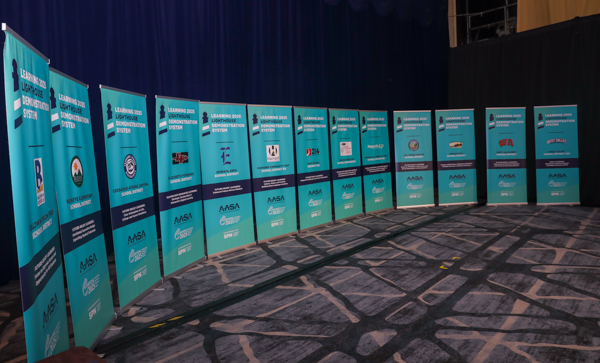 The AASA Learning 2025 National Summit will be held June 26-28 in Washington, D.C.
The AASA Learning 2025 National Summit will be held June 26-28 in Washington, D.C.
Educators are encouraged to access An American Imperative: A New Vision of Public Schools,
prepared and issued by the commission in 2021. The report articulates AASA’s vision, which is intended to serve as a guardrail for specific change, while also empowering districts and schools to tailor plans to the needs of their leaders
and learners.
For additional information, contact Mort Sherman, AASA senior associate executive director, at msherman@aasa.org, or Valerie Truesdale, AASA assistant executive director, at vtruesdale@aasa.org.
To join the conversation via Twitter, please access #Learning2025.

